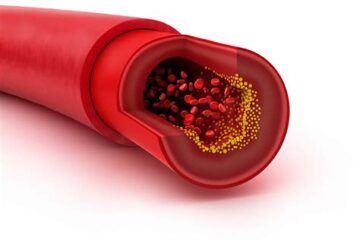
בפוסט זה – כריתת תוספתן מובילה למחלת קרוהן קלה יותר @ יואל קסלר אנו מציגים נתונים שפורסמו במקור המצביעים על כך שלמטופלים שעברו כריתת תוספתן ניתוחית יש מהלך קל יותר של מחלת קרוהן מאלה שלא.
In this post – Appendectomy lead to milder Crohn's Disease @ יואל קסלר we present data originally published in the Journal or Inflammatory Bowel Diseases that suggests that patients who underwent a surgical appendectomy have a milder course of Crohn's disease than those who did not.
Prior Appendectomy Is Associated With a Milder Clinical Course in Crohn’s Disease: A Nationwide Population-based Cohort Study
Anders Mark-Christensen, MD, PhD, Eskild Bendix Kristiansen, MSc, Søren Laurberg, MD, DMSc, Rune Erichsen, MD, PhD
Inflammatory Bowel Diseases, izae059, https://doi.org/10.1093/ibd/izae059
Published:
02 April 2024
Abstract
Background
Appendectomy may affect the clinical course of Crohn’s disease (CD), but rigorous evidence is sparse and contradicting. The aim of this study was to examine the association between appendectomy and the clinical course of CD.
Methods
All patients diagnosed with CD in Denmark in the period from 1977 to 2017 were identified from the Danish National Patient Registry. Patients with appendectomy were matched with up to 10 comparators with CD and no appendectomy; and rates of CD-related hospital admissions were compared between CD patients with and without appendectomy using incidence rate ratios (IRRs). We used stratified Cox regression analysis to calculate adjusted hazard ratios (aHRs) of initiating treatment with biologics or undergoing intestinal resections.
Results
In all, 21 189 CD patients (1936 with appendectomy and 19 253 without) were identified and followed for a median of 13.6 years. Crohn’s disease patients who had undergone appendectomy experienced a lower rate of CD-related hospital admissions (appendectomy before CD: IRR = 0.83; 95% confidence interval [CI], 0.81-0.85; appendectomy after CD: IRR = 0.85; 95% CI, 0.81-0.88) compared with CD patients without appendectomy. For patients with appendectomy before CD diagnosis, the rate of initiating biologics was lower compared with CD patients with no appendectomy (aHR1-<5 years = 0.61; 95% CI, 0.46-0.81; aHR5-<10 years 0.47; 95% CI, 0.33-0.66; aHR10-20 years = 0.61; 95% CI, 0.47-0.79), as was the risk of undergoing colorectal resections (aHR1-<5 years = 0.94; 95% CI, 0.77-1.15; aHR5-<10 years 0.63; 95% CI, 0.47-0.85; aHR10-20 years = 0.75; 95% CI, 0.54-1.04). Rates of small bowel resections were comparable for CD patients with or without appendectomy prior to CD. Appendectomy performed after CD did not influence the rate of initiating treatment with biologics or undergoing intestinal resections.
Conclusion
The clinical course of CD is milder for those who have previously undergone appendectomy.
The link to the full article can be found here.
For more interesting articles like this check out our blog.


